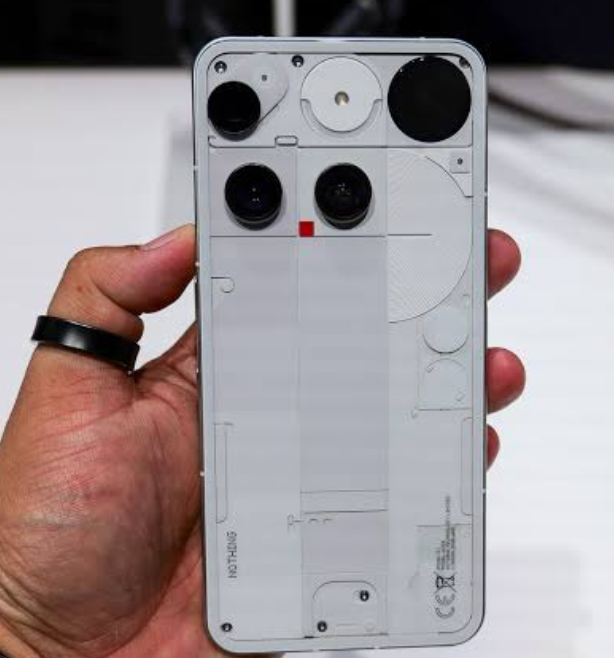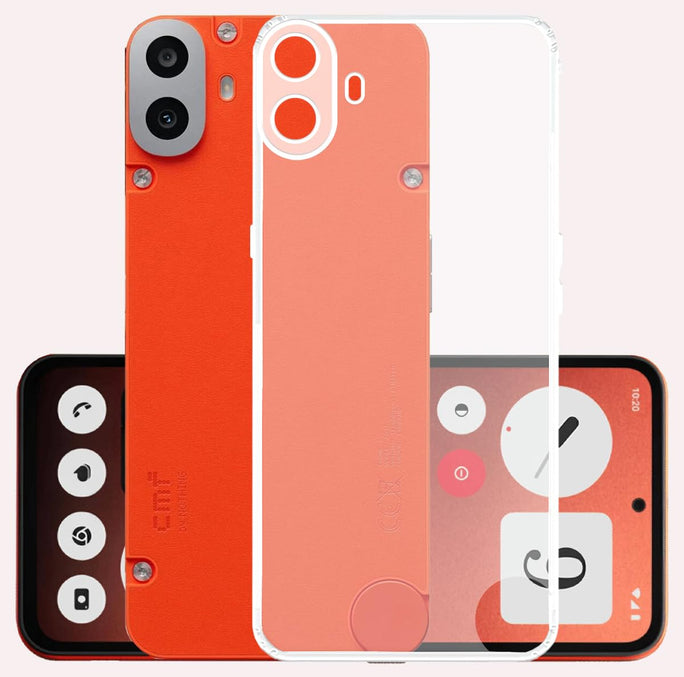
The Next Chapter for Nothing: Analyzing the Future of Android’s Most Hyped Brand
The Constant Buzz: Decoding the Future of Nothing’s Android Phones
In the ever-crowded landscape of Android phones, it takes a monumental effort for a new brand to capture the public’s imagination. Yet, Nothing, with its transparent design philosophy and minimalist software, has managed to do just that. Since its inception, the company has cultivated an aura of anticipation, turning every product launch and software update into a significant piece of Android news. As whispers and rumors about their next-generation devices begin to circulate, the tech community is once again abuzz. This isn’t just about a new phone; it’s about the potential evolution of a brand that promised to make tech fun again. Will the next iteration be a refinement of their successful mid-range formula, or will it be a bold leap into the fiercely competitive flagship territory? Analyzing the potential trajectory of Nothing’s upcoming smartphones provides a fascinating case study in brand evolution, market positioning, and the delicate balance between innovation and accessibility in the modern Android ecosystem.
Section 1: Nothing’s Journey So Far: A Calculated Disruption
To understand where Nothing might be heading, it’s crucial to examine its strategic journey. The brand entered a market often criticized for its “sea of sameness,” where glass-and-metal slabs are distinguished more by their logos than their design. Nothing’s approach was a direct response to this perceived stagnation, built on a foundation of three core pillars: unique design, clean software, and a curated ecosystem of Android gadgets.
The Design Philosophy: Transparency as a Statement
The most striking feature of Nothing’s products, from the Ear (1) to the Phone (2), is their transparent aesthetic. This isn’t just a gimmick; it’s a deliberate design statement. By revealing some of the internal components, Nothing creates a visual language that is both industrial and intricate. This design choice serves two purposes. First, it immediately differentiates their devices on a shelf packed with opaque competitors. Second, it reinforces the brand’s name and ethos—a desire to strip away unnecessary layers and focus on the core technology. The Glyph Interface, a system of LED light patterns on the back of the phones, further solidifies this identity. It’s a functional innovation that turns a typically inert part of the phone into an interactive notification and status indicator, a prime example of rethinking established smartphone conventions.
Nothing OS: The Pursuit of a “Pure” Android Experience
On the software front, Nothing OS has been lauded for its clean, near-stock Android experience. In a market where many manufacturers load their devices with bloatware and heavily skinned user interfaces, Nothing OS offers a refreshingly minimalist alternative. Its signature dot-matrix font and monochrome icon pack create a cohesive aesthetic that complements the hardware’s design. The strategy here is clear: appeal to Android purists and users frustrated with cluttered software. By focusing on speed, fluidity, and thoughtful customization rather than a laundry list of redundant features, Nothing has carved out a niche for users who value software simplicity and performance. This focus on a lightweight OS is a critical component of their value proposition, enabling mid-range hardware to feel exceptionally responsive.
Building an Ecosystem of Android Gadgets
Nothing didn’t start with a phone. It started with earbuds. This deliberate, step-by-step approach to building an ecosystem of Android gadgets has been methodical. By establishing their design language and brand identity with the Ear series, they built anticipation for their first smartphone. This strategy allows for cross-product synergy, where the cohesive design and software experience encourage users to invest further into the brand’s ecosystem. As they expand their portfolio, this interconnectedness will become an increasingly important factor in retaining customers and competing with giants like Apple and Samsung, who have long mastered the “walled garden” approach.

Section 2: Deconstructing the Rumors: A Potential Shift in Strategy?
Recent Android news and industry chatter suggest Nothing may be preparing for a significant evolution with its next lineup. While early devices targeted the upper-mid-range, leaked specifications and analyst predictions point towards a potential bifurcation of their strategy: a direct successor continuing the mid-range legacy and a more powerful model aimed at the “flagship killer” space. Let’s break down what these potential changes could mean.
The Chipset Conundrum: From Mid-Range Power to Flagship Performance
Perhaps the most significant rumored change revolves around the System-on-a-Chip (SoC). The Nothing Phone (1) used the capable Snapdragon 778G+, while the Phone (2) upgraded to the flagship-tier (albeit a generation old) Snapdragon 8+ Gen 1. This was a clear signal of increasing ambition. Rumors for the next generation suggest a potential split:
- A “Standard” Model: This device might feature a newer Snapdragon 7-series or a MediaTek Dimensity chip. This would allow Nothing to continue serving the price-conscious market segment that embraced the Phone (1), offering a refined experience with better efficiency and modern connectivity without a massive price hike.
- A “Pro” Model: Speculation points to this higher-tier model adopting a more current flagship Snapdragon 8-series processor. Such a move would pit Nothing directly against performance-oriented devices from brands like OnePlus, Google, and Samsung’s FE line. This wouldn’t just be an incremental upgrade; it would represent a fundamental shift in market positioning, targeting power users, mobile gamers, and those who demand top-tier performance.
A move to a cutting-edge SoC would have significant implications. It would unlock more advanced AI capabilities, improve image processing for the cameras, and provide the raw power needed for high-refresh-rate gaming and demanding applications, making the device a true powerhouse among Android phones.
Camera and Display: The Next Frontiers for Improvement
While Nothing’s cameras have been competent, they haven’t been market-leading. This is often an area where mid-range phones make compromises. The next generation is expected to address this. We could see upgraded primary sensors, potentially moving to a larger sensor size like the Sony IMX890 or its successor, which would drastically improve low-light performance and dynamic range. The inclusion of a more versatile telephoto lens, instead of just a primary and ultra-wide, would also be a significant step up, bringing their camera system in line with more premium offerings.
On the display front, expect refinements rather than revolutions. Nothing already uses high-quality OLED panels with adaptive refresh rates. Future improvements will likely focus on increasing peak brightness for better outdoor visibility and HDR content, further reducing bezel size for a more immersive screen-to-body ratio, and incorporating the latest generation of durable glass for better protection.
Section 3: Implications and Insights: What This Means for the Android Market
A strategic shift from Nothing, particularly a move upmarket, would send ripples through the Android ecosystem. It would challenge the status quo and force consumers and competitors to re-evaluate what a “premium” Android experience entails.
Redefining the “Flagship Killer”

The term “flagship killer” has been diluted over the years, but Nothing is uniquely positioned to revive it. Unlike brands that simply pack powerful specs into a generic body, Nothing’s strong design identity and polished software give it a qualitative edge. A potential “Pro” model wouldn’t just compete on raw performance; it would compete on experience. It would offer an alternative to consumers who want flagship power but are tired of the aesthetic and software philosophies of the dominant players. This forces a question: Is a flagship defined solely by its processor and camera specs, or does a unique user experience and design hold equal weight? Nothing is betting on the latter.
The Software Challenge at a Higher Price Point
As Nothing moves into a higher price bracket, the expectations for its software will intensify. While Nothing OS is praised for its simplicity, premium buyers often expect a richer feature set and longer-term support commitments. Nothing will need to strike a delicate balance between maintaining its minimalist ethos and adding meaningful features that justify a higher price. This includes advanced camera software, deeper integration with their ecosystem of Android gadgets, and potentially unique AI-powered features that leverage the more powerful chipset. Furthermore, their software update promise (e.g., number of OS upgrades and security patches) will be heavily scrutinized against the commitments made by Google and Samsung for their premium devices.
Real-World Scenario: The Creative Professional vs. The Everyday User
Consider two potential users for these upcoming Android phones.
Case Study 1: The Everyday User. This user values reliability, good battery life, a clean interface, and a phone that looks and feels unique. For them, a refined successor to the Phone (2) with a modern mid-range chip, an improved main camera, and a slightly brighter screen would be the perfect device. It delivers 90% of the flagship experience at 60% of the cost, wrapped in Nothing’s signature design.
Case Study 2: The Creative Professional or Power User. This user edits videos on the go, plays graphically intensive games, and relies on their phone for multitasking. For them, the “Pro” model with a top-tier Snapdragon 8-series chip is essential. The raw power allows for smooth 4K video editing, the advanced ISP enables better computational photography, and the high-performance core ensures that demanding apps run without a hitch. The clean Nothing OS becomes a benefit, ensuring that no system resources are wasted on bloatware. This user is willing to pay a premium for performance, but is looking for an alternative to the mainstream flagships.
Section 4: The Path Forward: Recommendations and Considerations

As Nothing prepares its next move, it faces both immense opportunity and significant risk. Navigating this transition successfully will require careful strategic planning.
Pros of a Dual-Device Strategy
- Wider Market Coverage: Offering both a mid-range and a premium device allows Nothing to capture a broader spectrum of consumers.
- Brand Elevation: A high-performance “Pro” model acts as a halo product, elevating the perception of the entire brand.
- Clear Upgrade Path: It provides a clear upgrade path for existing Nothing users who want more performance but love the ecosystem.
Potential Cons and Pitfalls
- Price Alienation: A significantly more expensive model could alienate the early adopters who were drawn to Nothing’s value proposition.
- Increased Competition: Entering the premium space means direct competition with the marketing budgets and R&D prowess of Apple, Samsung, and Google—a formidable challenge.
- Brand Dilution: If not managed carefully, a more complex product line could dilute the simple, focused brand identity that Nothing has worked so hard to build.
Tips for Potential Buyers
If you’re considering a future Nothing phone, here are some key things to keep in mind. First, define your needs. Do you require absolute top-tier gaming performance, or is a smooth, everyday experience with a great design more important? Second, watch the reviews for camera performance, as this is the area with the most potential for a significant leap. Finally, consider the ecosystem. If you’re already invested in or interested in Nothing’s audio products, the seamless integration offered by their phones will be a major selling point. Waiting for long-term reviews on battery life and software stability after launch is always a prudent best practice before making a purchase.
Conclusion: The Evolution of an Android Innovator
The next generation of Nothing phones represents a critical inflection point for the company. The journey from a single mid-range disruptor to a multi-tiered smartphone player is fraught with challenges, but Nothing’s strong brand identity and loyal community give it a significant advantage. By potentially offering both a refined mid-range champion and a new flagship contender, the company can cater to its base while ambitiously reaching for a new segment of the market. The upcoming announcements will be more than just another entry in the Android news cycle; they will be a definitive statement about Nothing’s long-term vision. Whether they can successfully balance their disruptive ethos with mainstream ambition will determine if they cement their place as a permanent and influential fixture in the world of Android phones and gadgets.



